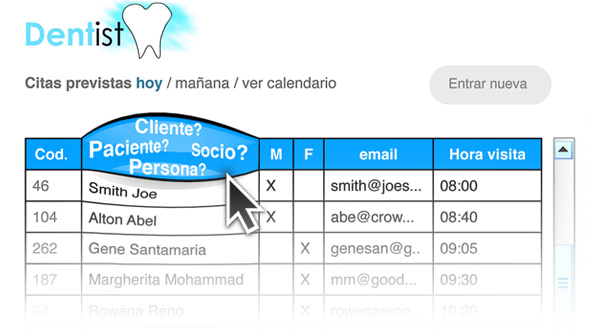Do you know of any company that explicitly states that it pays no attention to its customers? It seems ridiculous to ignore the match referee: the current or potential customer.
It would de hard to find any company that admits that it is not customer-centric and most of them truly believe that they are. However, if we look closely, we see that many of them are really focused on their products or internal process (factories, logistics, etc.). They do not take the customer into account as an individual, with their own profile and contexts. In other words, their relation with the customer is transactional, as if a sale were a case of “I’ll swap you these quality molecules for money.”
How to make a company customer-centric
Many mindful directors undertake actions to make sure that the customer comes first in their company. One extremely interesting method of doing so is to calculate the Customer Lifetime Value (CLTV) or, to put it another way, the value in monetary terms of each customer in the long term if the continue buying as they have done to date (see my article ‘Data-driven retail’).This greatly helps us develop an understanding of the impact of decisions on customers.
Now, however, I would like to propose another method: changing the vocabulary that we use.
According the Jean Berko Gleason, an expert in socio-linguistics, the words that we use are immensely powerful in terms of shaping how we see things. He refers to this phenomenon as “framing” (De Waal, 2011). The act of choosing a particular world to name a certain thing clearly affects how we perceive it.
Science has demonstrated that the words that we use have a direct and immediate impact on our emotional response and the way in which our brains react (Meacham, 2013). Recent research shows that the different words that we use activate different areas of the brain and end up influencing our behaviour in distinct ways (Sammarco, 2014).
The idea that the way we perceive the world is highly influenced by the concepts (words) that we use is far from new. In fact, throughout the 20th Century, this idea grabbed the interest of many scientists (Stanford Encyclopaedia of Philosophy). The most notable of these was Thomas Kuhn (1970) who believed that “what people see depends both on what they look at and on what their previous visual-conceptual experience has taught them to see”. When we change the way we refer to things, we change how we think, and this modifies how we interpret reality and, in the end, how we act.
Taking advantage of science
To emphasize the importance of the customers’ voice, we have to introduce a vocabulary in which they are the protagonists. A change in the language we use can help us to gain a better understanding of our customers (Ehman).
If our vocabulary regularly talks about statistics, ratios and numbers of orders, our activity will tend to be transactional. If we add different facets regarding our customers to our control panels, we will have a far greater chance of becoming part of our customers’ lives.
For instance, it you went to a dentist, think how you would feel if you saw the appointment schedule (see the image above) depending on the different names used in the column showing the people who will be coming.
Let’s look at another example. If I talk about “the Internet of things”, what ideas come to mind? Probably devices connected via the Internet. However, if I say “I can change the colour of the lights in my house from work using my telephone”, you would probably smile, picturing somebody empowered.
In both cases, we are talking about the same thing, but the perception is very different. The terms used can change the understanding of something new and make it more client-centric.
Speaking in a different way is practical
Obviously, changing the vocabulary that we use does not instantly mean that the customer has become the focus of the company nor that the processes automatically change. It takes time. Our ideas flow with their own momentum, based on certain mindsets that we have inherited and use non-consciously.
In order to change our habits in terms of thinking (and taking action), we have to identify them and bring them into our consciousness. As soon as we are able to create a different habit, the mind, as it is can be molded, is reinforced and customer-centricity is achieved. It is well worth the effort.
_________________
Bibliography
- De Waal, M. (2011) “Jean Berko Gleason on how words influence thought”. Daily Maverick, 26th October.
- Meacham, M (2013) “How words affect our brains”. Talent Development, 11th July.
- Sammarco, G (2014) “El futuro de tu cerebro está en tus palabras”. Semana económica, 21st November.
- Stanford Encyclopaedia of Philosophy.
- Kuhn, T. (1970) The structure of scientific revolution. Chicago: University of Chicago Press.
- Ehman, L. “Create a customer-centric vocabulary”. Selling Power.
___________________________
Lluis Martinez-Ribes
Source: Código 84, number 186
April 2015




